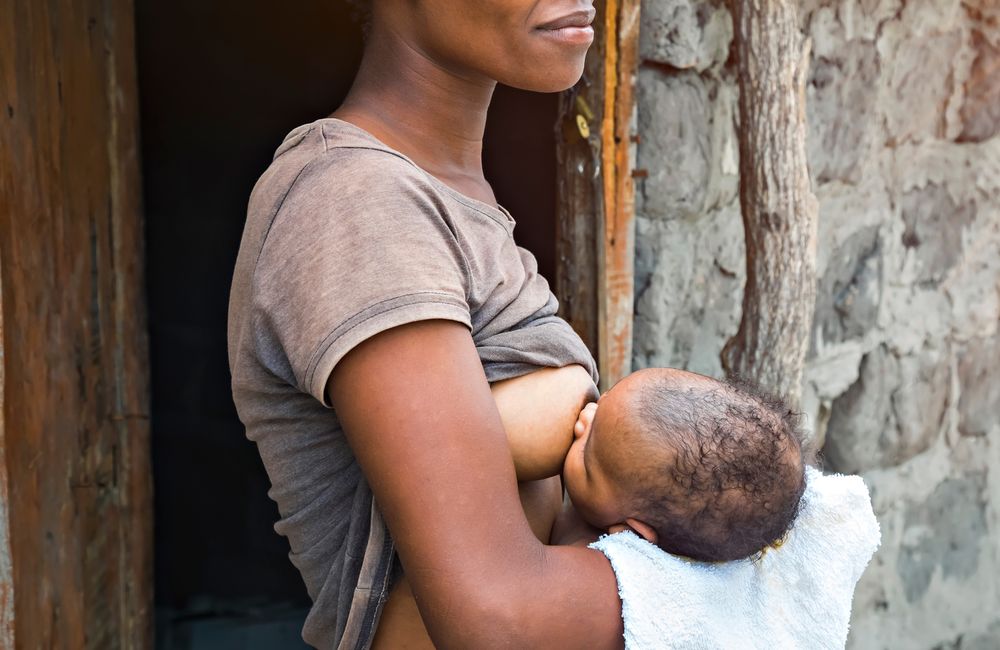
New mothers living with HIV are often unsure about whether or not to breastfeed their children, and for how long, the African Workshop on HIV & Women held in Nairobi, Kenya in February heard. This is because their infant feeding practices are influenced by the people around them, which makes the decision-making process even more difficult.
"I was very taken aback by the treatment I received from a medical practitioner who is very much aware of what our guidelines are," Nozibele Qamngana-Mayaba from South Africa shared during a plenary session. "I was told that because I am HIV positive, I could not breastfeed. So although I knew I have the right to say otherwise, that I could breastfeed, I was very scared, and I agreed that I would not breastfeed."
For mothers living with HIV and adherent to HIV treatment in low- and middle-income countries, the World Health Organization recommends exclusively breastfeeding their babies for six months and continuing breastfeeding along with complementary foods until at least their first birthday.
However, across Africa, many mothers' infant feeding practices are inconsistent with national or international recommendations.
A study presented by Elizabeth Nagawa from the AIDS Information Centre in Uganda found high variability in breastfeeding practices among new mothers in the country.
Conducted in 2021, the study recruited 86 mothers from two facility-based groups that provided psychosocial interventions to pregnant and breastfeeding mothers living with HIV to eliminate vertical transmission. The mothers had a median age of 28, 90% were virally suppressed with undetectable viral loads, 5% were non-suppressed and 5% were newly diagnosed. They were monitored continuously until their children reached 18 months of age.
Out of 86 mothers, 10% breastfed for less than three months, 20% breastfed for 3-6 months, 40% breastfed their children until one year as per the guidelines, and 30% breastfed for over one year.
For women who breastfed for more than a year, a majority (71%) did so for fear of disclosure of HIV status to relatives, and so breastfed to timelines similar to the general population. For those who breastfed for less than six months, a majority (65%) had a fear of transmitting HIV to their baby. This was attributed to nonadherence, detectable viral load results and peer pressure from fellow women living with HIV. It was observed that 12% of babies who had been breastfed for less than six months were malnourished and or had frequent ill health.
One baby tested positive for HIV at 18 months.
According to Nagawa, cultural practises in Uganda in post-natal care by in-laws and relatives (which prematurely introduces liquid and other solid foods to babies) also play a big role in breastfeeding practices.
Although infant feeding guidelines differ between low-income regions and high-income countries (the latter recommend formula feeding), the conference also heard that there is an increasing desire to breastfeed in high-income countries.
Data presented by Dr Ebunoluwa Adejuyigbe, a professor of paediatrics at Obafemi Awolowo University in Nigeria, showed that in Germany, out of 15 facilities surveyed, 13 HIV-positive women were choosing to breastfeed in 2020, up from 1 in 2009. In the United States, of 93 HIV clinicians surveyed, over 30% said the clients still breastfed after clear instructions not to. Other studies from high-income countries also reported that mothers with HIV feel an acute and permanent sense of grief and feelings of loss when they cannot breastfeed their infants.
Unfortunately for women, there are still many unanswered questions regarding infant feeding. According to Dr Adejuyigbe, there are still gaps in our understanding of the role of breastmilk cells in transmitting HIV, the effects of maternal antiretroviral therapy on infants, and the challenge of addressing some mothers’ poor adherence to treatment after birth.
Where do we stand: African Women Living with HIV. The Past, the Present and the Future. African Workshop on HIV & Women, Nairobi, session 1, 2024.
Nagawa E et al. Breast Feeding Practices Among Women Living With HIV: Experiences From Breast Feeding Women Enrolled in Facility Based Groups at a HIV Clinic in the Suburbs of Kampala, Uganda. African Workshop on HIV & Women, Nairobi, abstract 1, 2024.
Does U=U apply to breastfeeding? African Workshop on HIV & Women, Nairobi, session 7, 2024.

